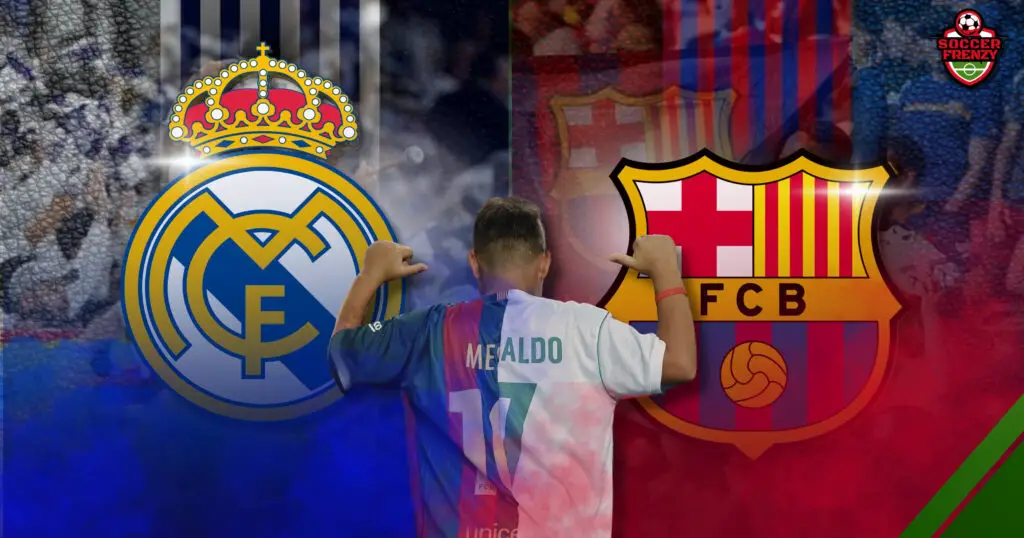Biggest Rivalries in Football: Real Madrid vs Barcelona
El Clasico is the name of the biggest derby in the world, which means “the classic.”
While searching for an adequate name, the Spaniards chose the simplest and most impressive, which has become a special brand in the football world.
Initially, the name El Clasico referred only to matches in the Spanish championship, but over time, it would include matches between Barcelona and Real Madrid in all competitions.
It is considered one of the most important events in the world of football, and apart from the sports competition, it is also a stage for the manifestation of disagreements of another kind, primarily political.
The two clubs’ history is permeated with political decisions, pressures, and events that did not always involve sports.
Barcelona was founded in 1899 by Joan Gamper with several other foreign footballers, while Real Madrid was founded in 1902 exclusively by Spaniards. King Alfonso VIII in 1902 and took over all state affairs.
In his honor, a football tournament was organized in Madrid to which Barcelona and the Basque football club Vizcaya were invited.
Then, Madrid FC was already recognized as a “royal club,” which will continue to bother compatriots from Catalonia, historically known for their struggle for independence.
The guests beat Madrid 3:1 before being defeated 2:1 in the final by Basque.
Alfonso organized a duel for third place to alleviate the shame, but that failure was recorded as the first clash between the two clubs in history.
Until 1928, when the Primera Division started, Real and Barca played exclusively friendly matches, and the real rivalry began to be born during the thirties, the war years, especially during the rule of General Franco.
As the popularity of football grew, Barcelona increasingly became a symbol of Catalan pride, a favorite among left-wing Spaniards, while Real Madrid increasingly became a symbol of the conservative right, loyal to the king and the government.
The first sparks of real, sincere hatred appeared after, in August 1936, Franco’s gendarmerie arrested and killed without trial the president of Barcelona, Josep Sunyol.
Without the right to make a different choice, they tried to survive Franco’s regime in Barcelona somehow; they even gave him two awards, but the hatred directed towards Real and Madrid grew more and more.
Its climax, when things went to hell once and for all, came in June 1943, during World War II.
Barcelona and Real Madrid met in the semi-finals of the competition called “Copa del Generalísimo” in honor of the great leader, and Barca won the first game on their home turf, 3-0.
And it was clear – Hell will await Barca in Madrid!
After huge pressure and threats on Barca’s players, the match ended with a monstrous 11-1; it will remain for a very, very long time the biggest victory in El Clasico’s history. However, the conditions were so irregular that even the Real fans did not celebrate at the end. Despite, there was also some love in all of this.
Thus, three times, they gave each other a “pasillo,” a welcome with applause before the match if the opponent had already secured the league title, and once Real avoided doing it, in May 2018.
This indicates that time does not reduce tensions, and we are discussing eternal rivalry here. And the most difficult thing in all of this, of course, is to applaud the opponent. However, in four historical cases, Santiago Bernabeu gave a “standing ovation” to a Barcelona player. And once, it was the other way around…
Englishman Laurie Cunningham was so good in Real’s 2-0 win in February 1980 that the Nou Camp had to applaud—the first time in history for a Real player.
With the same measure, the Madrid audience retaliated even three times to the greats – first to Diego Armando Maradona, then to Ronaldinho and Andres Iniesta.
Read More About Other Leagues and Original Series.


